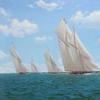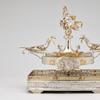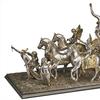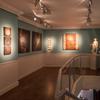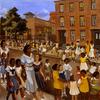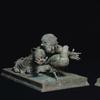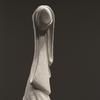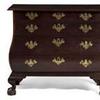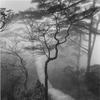EXPERIENCE THE MAJESTY, POWER AND BEAUTY OF THE OCEAN THROUGH SALT-AIR SCENES FROM THE CHRYSLER MUSEUM COLLECTION
- NORFOLK, Virginia
- /
- December 21, 2015
First new exhibition of 2016 showcases paintings and drawings by 19th-century master seascape artist William Trost Richards
The Chrysler Museum of Art’s newest exhibition explores the talent of one of America’s greatest painters of coastal views. Seascapes by William Trost Richards presents 40 vibrant and colorful drawings, watercolors and oil paintings by this prolific artist. The exhibition will be on view in the Museum’s Focus Gallery (G. 229) Jan. 9 through May 1, 2016.
“The Chrysler is very fortunate to have such a large collection by this distinguished artist,” says Alex Mann, the Museum’s Brock Curator of American Art, who created the exhibition. Thanks largely to a generous gift in 1994 from the painter’s granddaughter, Edith Ballinger Price (1897–1997), the museum owns more than 100 of Richards’ works, including handsome pieces from all phases of his career. For this exhibition, Mann selected the finest pictures of sprawling beaches and craggy cliffs, probing the artist’s favorite subject — the water.
Born in Philadelphia in 1833, William Trost Richards came of age and attended his first art classes during the years in which Hudson River School landscape painters like Thomas Cole and Asher Durand enjoyed wide public praise. After studying all elements of the natural world, he found the colors and shapes of rocks and waves provided his richest source for pictures. In 1874 he began summering in Newport, Rhode Island, eventually building a house nearby on a bluff overlooking the ocean. He was also a prolific traveler, visiting and painting the coastline throughout New England, as well as in Italy and the British Isles. Wherever he went, Richards recorded striking views. Many of these journeys are featured in the Chrysler’s show.
“This exhibition demonstrates the tremendous variety of Richards’ style and work,” says Mann. “The pen and ink sketches are so simple and fresh, while the larger watercolors are conscientiously detailed. He could do it all.”
This mixture of sketches and finished pieces allows visitors to trace the artist’s working process. Also on view are some of Richards’ materials and equipment, including his camp stool, his palette and his paint box, still filled with paint tubes more than a century old.
Many of the works in this exhibition are on public display for the first time. One notable work is a previously unstretched and unvarnished oil-on-canvas painting of rocky cliffs and crashing waves that was restored to museum-quality exhibition standards by the Chrysler’s conservation team.
“It was a delight to clean these paintings and watch their rich colors come to life,” says Mark Lewis, the Chrysler’s Conservator of Paintings. Lewis, with the assistance of his National Endowment for the Humanities conservation fellows, treated more than a dozen of the works included in this show.
Critics and peers praised Richards’ mastery of color and his understanding of the visual interplay of sunlight, wind, and water. Knowing that no two rocks or waves are identical, he approached every seascape as an entirely fresh challenge, and his curiosity about the natural world did not lessen with age. As the works in this exhibition demonstrate, the artist undertook some of his most ambitious travels very late in life, always searching for one-on-one encounters with the grandeur of barren cliffs and pristine beaches. America’s population doubled between 1870 and 1900, and these images of pure nature found particular favor with residents of rapidly-growing cities, many of them, like New York and Boston, on the waterfront.
Seascapes by William Trost Richards inaugurates a season of exhibitions about land and sea at the Chrysler Museum of Art. “These intimate drawings and watercolors will be a perfect foil to the large-format, often abstract photographs in Edward Burtynksy: Water, our winter keynote exhibition,” Museum Director Erik Neil says. “Burtynsky’s works explore the complicated and often problematic tensions between nature and man, between essential resources and industry. By contrast, Richards’ love for the sea is more idealistic, a search for wild beauty in remote places.”
Edward Burtynsky: Water opens to the public on Feb. 12. Two other related exhibitions will also be on view. In New Light on Land (opening Jan. 28), exceptional landscape photographs from the Museum Collection explore how nature has inspired innovation and creativity since the advent of the medium. And in Cities: Departure and Deviation (opening Jan. 30), artist Norwood Viviano transforms population data into precise glass graphs that illustrate both urban growth and flight. Admission to each of these exhibitions is free.
Visit the Museum’s website, chrysler.org for details on exhibitions and related programming and events.





